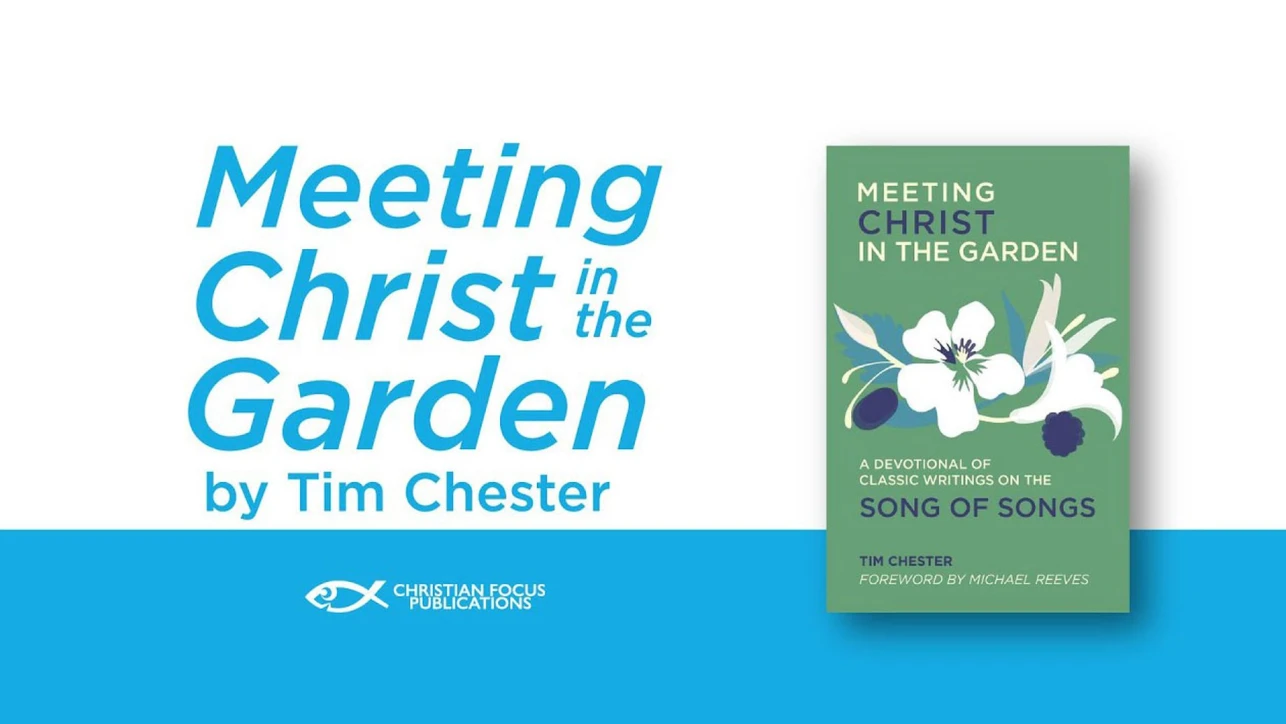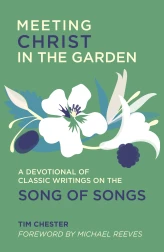Meeting Christ in the Garden
The great nineteenth–century preacher Charles Spurgeon described the Song of Solomon as the Most Holy Place. He compared the historical books of the Bible to the outer courts of the temple, and the Gospels, Epistles, and Psalms to the Holy Place: the place that only the priests could enter. His point was that, to a greater and lesser extent, all these books bring us near to God. But the Song of Songs is

The great nineteenth–century preacher Charles Spurgeon described the Song of Solomon as the Most Holy Place. He compared the historical books of the Bible to the outer courts of the temple, and the Gospels, Epistles, and Psalms to the Holy Place: the place that only the priests could enter. His point was that, to a greater and lesser extent, all these books bring us near to God. But the Song of Songs is the Most Holy Place, the inner sanctum, a holy of holies. It ‘occupies a sacred enclosure into which none may enter unprepared.’ That’s because in the Song we meet Christ. The garden portrayed in the Song is a location created in the imagination, in which we may spend time with Christ and enjoy His love. The language of human love is intended to evoke an experience of divine love, and inspire in us a response of love. The Song channels our desires towards their true end, our Creator and Redeemer.
Throughout most of the history of the church, the Song of Songs has been seen as a picture of God’s love for His people and Christ’s love for His church. Some commentators focused on the relationship between God and the individual soul; others saw the Bride in the Song as the church as a whole. But all agreed the Song used the language of human love and marriage (perhaps a specific marriage of King Solomon) to evoke God’s love. Only in the nineteenth century did scholars start to regard it primarily or exclusively as a celebration of human sexuality. This view dominated the scholarship of the twentieth century. But there are signs the tide is turning again back to the classic view.
Read in the light of the wider Bible story, it is hard to avoid the allusions to God’s relationship with His people. So many other passages speak of God’s love in marital terms or liken our infidelity to adultery (Exod. 34:15; Ps. 45; Isa. 54:5, 62:5;
Hosea 1–3; Ezek. 16; Jer. 11:15, 12:7; Eph. 5:22–32; Rev. 19:6–9).
But there are also indications within the Song itself that it’s intended to picture God’s relationship with His people. Some descriptions of the woman seem more like descriptions of a landscape. She is likened to the land of Israel because she represents Israel. The woman also comes to her wedding out of the wilderness in a column of smoke (Song 3:6, 8:5), just as the people of Israel came to covenant with God at Mount Sinai out of the wilderness, led by the pillars of cloud and fire. Moreover, the poem is full of garden imagery that takes us back to Eden – the place where God walked with humanity. The tabernacle and temple were also full of garden imagery. Written into the architecture of the temple was the promise of a restored Eden. And that promise is also written into the poetry of the Song. No wonder Spurgeon thought of it as the Most Holy Place.
In this book I’ve drawn from the rich history of reflection on the Song of Songs. I’ve lightly edited the extracts, mainly by replacing archaic words and shortening sentences. I’ve used an ellipsis (…) to indicate where I’ve removed larger sections, but, to avoid cluttering the text, I’ve not used one where I’ve merely left out a few words or sentences.
More or less every verse of the Song is covered to provide a good introduction to the Song. And included are contributions from commentaries/reflections from the fourth to the nineteenth centuries to give readers a good feel for how Christians have traditionally read the Song. But my main aim has been to provide a collection of devotional treasures that point us to the love of Christ. My goal is that we might draw near to God through the Song.
A number of extracts make connections between the exalted language of the Song and our everyday experience in a way that enables us to put it into practice. But, in many ways, I think the primary aim of the Song is to inspire us not to settle for a half–hearted sense of Christ, but to pursue Him more – to know His love not just in theory, but in our own experience.
I think the primary aim of the Song is to inspire us not to settle for a half–hearted sense of Christ, but to pursue Him more – to know His love not just in theory, but in our own experience.
As we prepare to enter the holy territory mapped out in the Song, let’s join with the twelfth–century Benedictine abbot William of St. Thierry in this prayer.
As we approach … the marriage song, the song of the Bridegroom and the Bride, to read and to weigh your work, we call upon you, O Spirit of holiness. We want you to fill us with your love, O Love, so that we may understand love’s song – so that we too may be made in some degree participants in the dialogue of the holy Bridegroom and the Bride; and so that what we read about may come to pass within us. For where it is a question of the soul’s affections, one does not easily understand what is said unless one is touched by similar feelings. Turn us then to yourself, O holy Spirit, holy Paraclete, holy Comforter; comfort the poverty of our solitude, which seeks no solace apart from you; illuminate and enliven the desire of the suppliant, that it may become delight. Come, that we may love in truth, that whatever we think or say may proceed out of the fount of your love. Let the Song of your love be so read by us that it may set fire to love itself within us; and let love itself be for us the interpreter of your Song.



